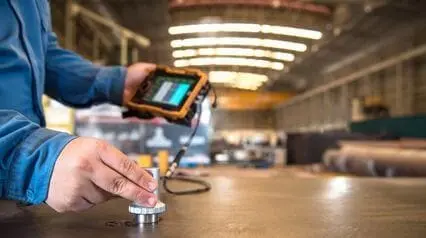What is Non-Destructive Testing?
Non-destructive testing (NDT) is a type of testing that is used to evaluate the properties of a material, component, or system without causing damage. It is an essential tool in many industries, including the aerospace, automotive, construction, and manufacturing sectors.
NDT is typically used to inspect materials and components for flaws, such as cracks, voids, inclusions, and porosity. This method can also be used to measure the thickness of materials, the hardness of metals, and the properties of composites.
Why is NDT Testing Important?
Non-destructive Testing is a critical tool in ensuring the safety and quality of products and systems. It can be used to test for a variety of potential problems, from cracks and other defects to manufacturing issues. By catching these problems early, NDT can help avoid costly repairs or replacements down the line.
NDT is essential in ensuring the quality and safety of products and materials. It can be used to:
- Detect defects
- Assess the strength of a material
- Verify the dimensions of components
- Ensure that products meet the required standards for quality control
What is the Difference Between Non-destructive Testing and Destructive Testing?
There are two main types of testing that are used to evaluate the strength and integrity of materials: destructive testing and non-destructive testing. Destructive testing involves causing damage to the material in order to test its limits, while non-destructive testing allows materials to be tested without causing any damage.
Each type has its own advantages and disadvantages. Destructive testing is often more accurate than non-destructive testing but can only be used on a limited number of materials. Meanwhile, non-destructive testing produces less accurate results but can be used on a wider range of materials.
Which type of testing is right for your needs will depend on a variety of factors, including the type of material being tested and the accuracy required.
What are the Main Types of NDT Methods?
There are a variety of different non-destructive testing methods. Each of these techniques can be used to detect different types of defects, so it is important to choose the right one for the job. The most common NDT methods are:
1. Visual Testing
Visual testing is the simplest and most common form of NDT. It is often used as a first step in the NDT process to identify potential areas of concern. It involves visually inspecting the surface of the material for defects such as cracks, scratches, or other irregularities. However, it is limited by the inspector’s ability to see the defect.
2. Radiographic Testing
Radiographic testing uses X-rays or gamma rays to penetrate the surface of the material and create an image of the internal structure. This image can then be analyzed for defects. Radiographic testing is useful for detecting internal damages that are not visible from the outside.
3. Ultrasonic Testing
Ultrasonic testing uses high-frequency sound waves to detect defects in the material. The sound waves are sent into the material and will bounce off of any defects that are present. The echoes are then converted into an image that can be analyzed for defects. Ultrasonic testing is useful for detecting both internal and external defects.
4. Magnetic Particle Testing
Magnetic Particle Testing, also known as Magnetic Particle Inspection (MPI), uses magnetic fields to detect surface and subsurface defects in ferromagnetic materials. A magnetic field is applied to the material, and iron particles that are magnetized by an electrical current are used to highlight any flaws present in the product. Magnetic particle testing can be used to detect cracks, voids, leaks, or indications.
Create Your Own NDT Checklist
Eliminate manual tasks and streamline your operations.
Get started for FREEFactors Considered When Conducting Non-Destructive Testing
There are several factors considered before conducting NDT in order for the results to be correct and concise. These factors are as follows:
- Researching the suitable NDT method for the product
- Obtaining proper requirements for safe and reliable operation
- Characteristics of processes such as properties of materials used
- Usefulness of the available methods
- Economic value of the testing to be conducted



